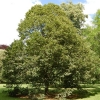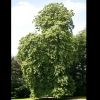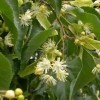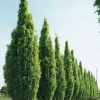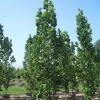Thursday 27th July, 2017
Hi
Do you ever catch yourself looking at the shapes of trees and where they are planted and the effect that they have on the overall landscape.
I just love our driveway that is flanked by what are now wonderfully handsome trees. They are not the kind of trees that are stunning in flower but rather that they have nice form and green leaves for most of the year and are there for several reasons. The first is that they look great and create an entrance way which is shaded in the summer and open and light in the winter time. Next on the list is that they break that constant wind from the south west.
How do you choose what tree to line your driveway with???
For many this is a tricky question as you have to think through all the pros and cons of all the different varieties of tree that could achieve the effect you are after. I quite often say to clients that as they drive around look at what other have used to achieve their look.
Now here are some things to think about.
Deciduous versus evergreen... everyone thinks about the autumn leaves and yes, as they get bigger there can be quite the leaf drop, but it is only once a year. The leaves look so pretty as they fall but I do clean them up often as they can be quite messy and quite quickly break down on paved surfaces. Evergreens on the other hand shed their leaves throughout the year instead of just annually and some evergreens have leaves that don't break down very quickly either. I think of cleaning leaves up as a bit like housekeeping in that dusting is a constant task, as is cleaning the bathroom or polishing the silver!!
Evergreen trees create a much heavier solid look in the landscape and in generalising always seem to be quite rounded style trees. Deciduous trees can look lighter and much lacier and filter that all important sunlight.
Deciduous trees let the light through in the winter and I think that is a big plus... it means that the sun can get through to your driveway and it wont stay so damp compared to if you have evergreen tree. Another point I love about deciduous trees is that I get a different look with every season. There is nothing so special as the new leaves opening, then moving into the mature foliage of summer, followed by the senescent tones of the autumn with such varied and vibrant colours to enhance the autumn landscape and the naked form of the winter. Of course I must not forget that I alternately planted evergreen
Magnolias with my gorgeous deciduous
hornbeams.
Moving right along to form which is so apparent in the winter and again there are just so many choices. starting with upright, columnar or fastigiate trees, these create quite an upright sentinel effect and are really useful for that particular look.. like soldiers in a row. These are also useful if you have a shortage of space along an avenue like a narrow border. Some really good examples of columnar trees would be
Quercus robur fastgiata (upright English Oak) and
Carpinus Betulus fastigiata (upright hornbean) and there are even some upright flowering cherries as in
Amanogawa and the autumn colours of the upright maples like
Rubrum columnare and
Bowhall. Now don't think of these trees as being small as they belong to the bigger genus of Oaks and Beech as in the case of the first two but their overall form is narrow.
Most other trees will either be rounded or pyramidal in shape. That means that they the will spread across. Here the choices are many from those that belong to the large genuses or those that are more moderate. Its now that you start to think about the use of the drive or avenue. If just cars are use it then that means you can have smaller trees but if truck are going to be using the drive then obviously you will need a bigger tree with a higher canopy. Larger trees will include
Tilia,
Oak,
Fagus,
Fraxinus,
Liriodendron,
Platanus,
Acer and the list goes on.
That brings us to maintaining such trees and from a young age they will need limbing up or crown lifting. The tree that you take home to plant will need training and shaping over the next three to four year to help it on its way to being a specimen tree. This will mean that as it grows each year you remove the lower ring of branches to form a clear trunk to a desired height. We do this yearly so as not to denude the tree of too much of its feeding ability. The ultimate height will depend on the traffic or level of use that you want to occur under the trees. In the case of our driveway which was used for cars and small trucks now has quite large trucks using it and so the trees had to be lifted quite high.
I have found that after every spring the branches tend to keep lowering due to the tree constantly growing and so crown lifting after the spring growth becomes an annual task. The avenue of Awanui cherries in the garden centre always drop after each growth flush and I need to keep them high so that customers and barrows can get underneath.
How far apart, well that is the question and the answer is that size becomes relevant to time. For example an Oak tree may take 20 to 30 years to become a mature height. There is no hard and fast answer because if you plant your Oak at close centres then they will grow tall and slender.... or at ten years you could take every second one out and then let the alternate trees continue to form. My Avenue of Tillias were planted at 6 metre spacing some 20 years ago and they are all touching now and we possibly could take every second one out now but I still want the protection from the wind. In hindsight we could have planted them at 10 m apart but for us they have worked well at the 6m spacing.
If I was planting this again I would probably plant at 10 or 12 metres spacing and then plant a quicker growing tree (like
Alnus cordata) in between which would be removed at the 7 to 10 year time frame to allow the longer term trees to come through in the 10 to 20 year time span. Food for thought!!!!
Asparagus Crowns are in and now is the time to plant these. Technically a perennial, these roots that are all hitched at the top, need a dedicated area to grow. Plant at 50 cm spacing apart and I suggest that 10 crowns would be the minimum to get those delicious spears... better to get a couple of bundles of 10. The first year, don't harvest, pick some spears the second year and then they should be in full production in their third year producing delicious spears for at least couple of decades or more.
Maori Potatoes are available for those early plantings, Typically with purple or more coloured skins and if I recollect a softer texture but just awesome for cooking with. I love the different colour skins which looks attractive in a medley of roast veges. There are several cultivars to choose from.. Give them a go!!!
Yams belong to the Oxalis family and need to be planted from now on. Plan to plant them in a dedicated spot and give them a long season. last time I grew these i didn't wait long enough so will have to give them another go in the garden. Next time in a spot where I don't need the space.!
It has been a very busy week at the nursery this week and I seem to have spent most of it in the office answering email queries and making sure of the smooth transition of our new accounts person with lots of training being done. Hopefully you have all had a productive week as well and you can now prepare for an enjoyable, hopefully fine, weekend.
from Lloyd, Harry and the Wairere Team
Make it a Wairere weekend where even GNOMES know that gardening's not a drag.

